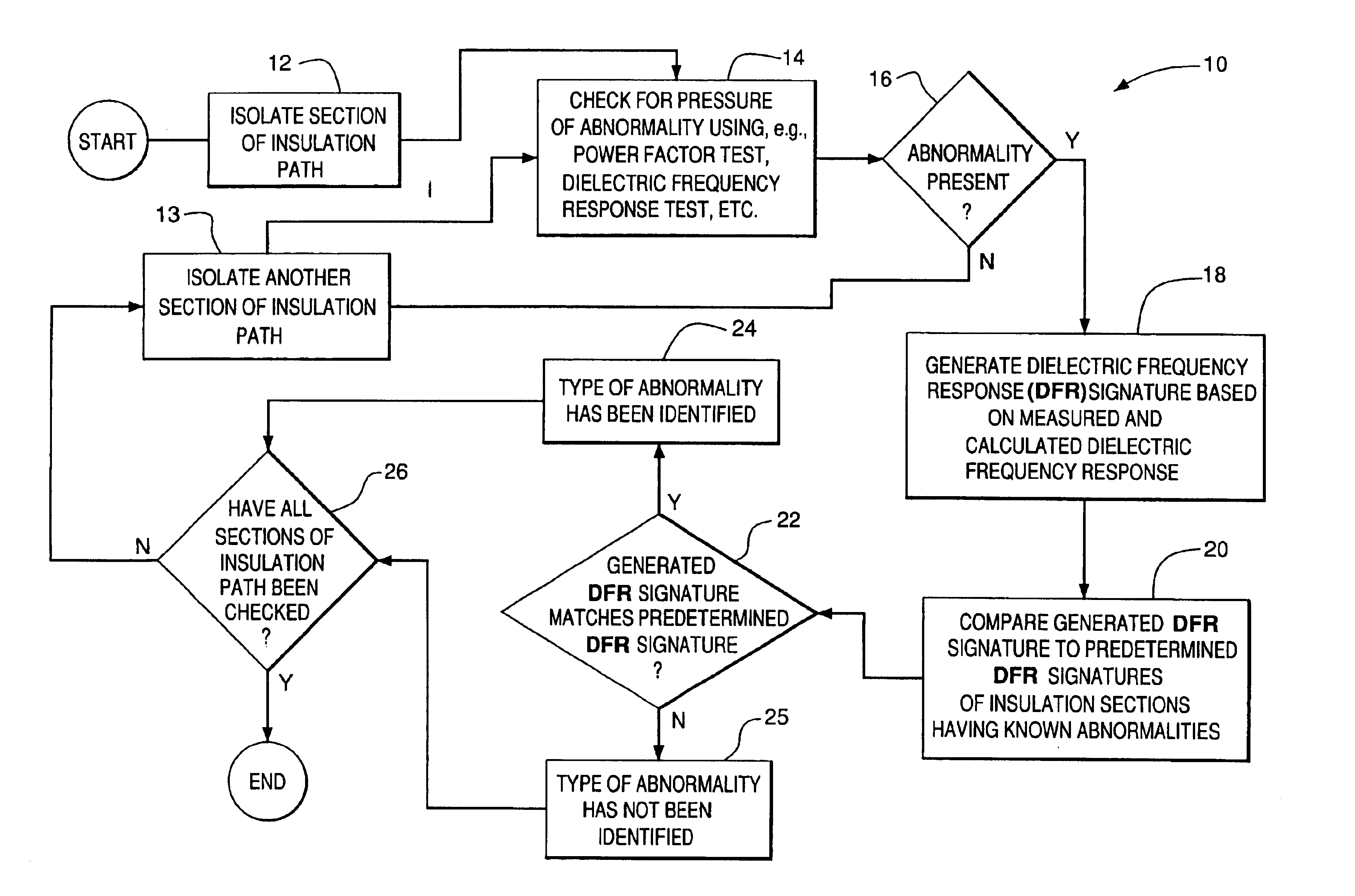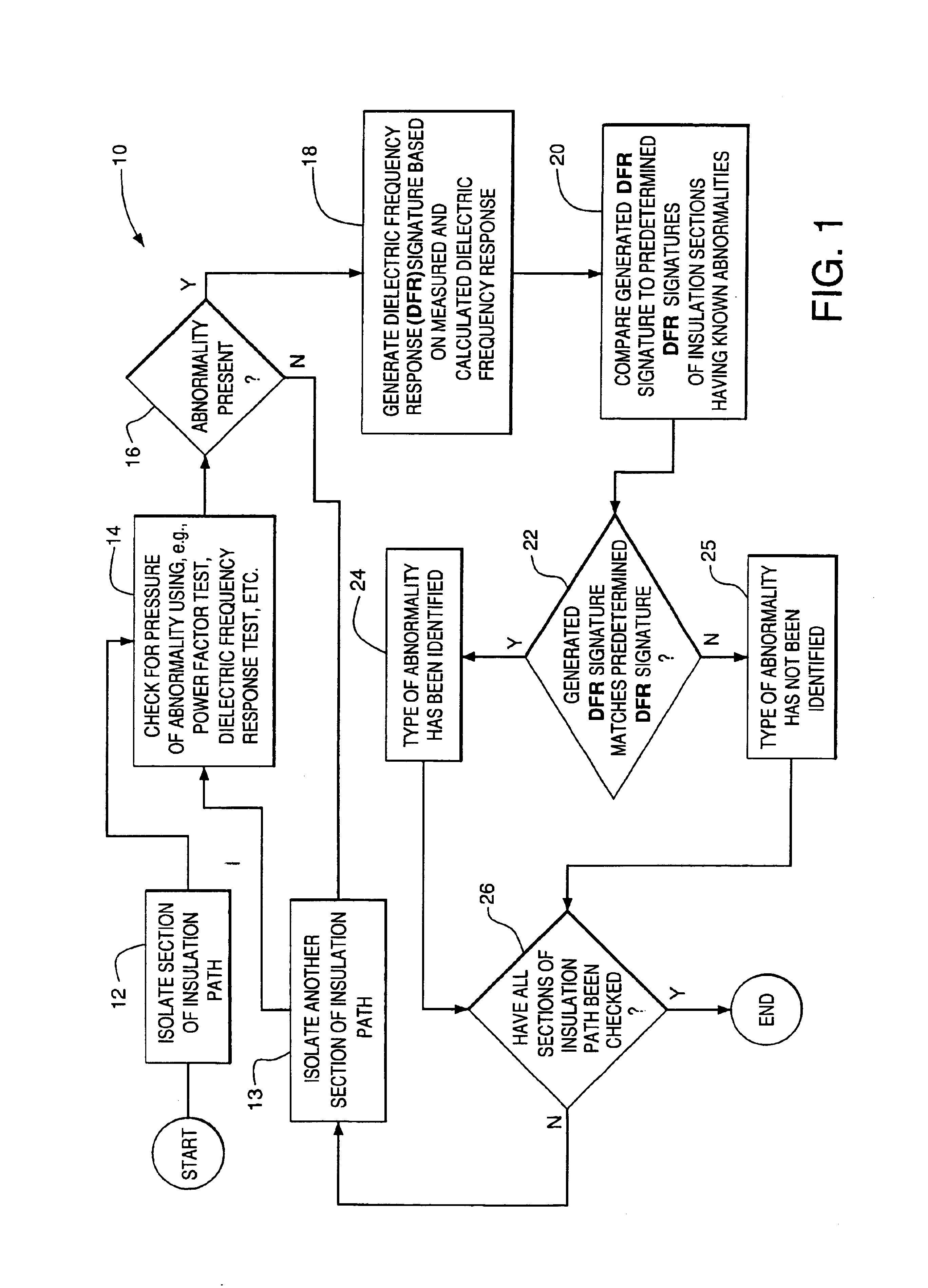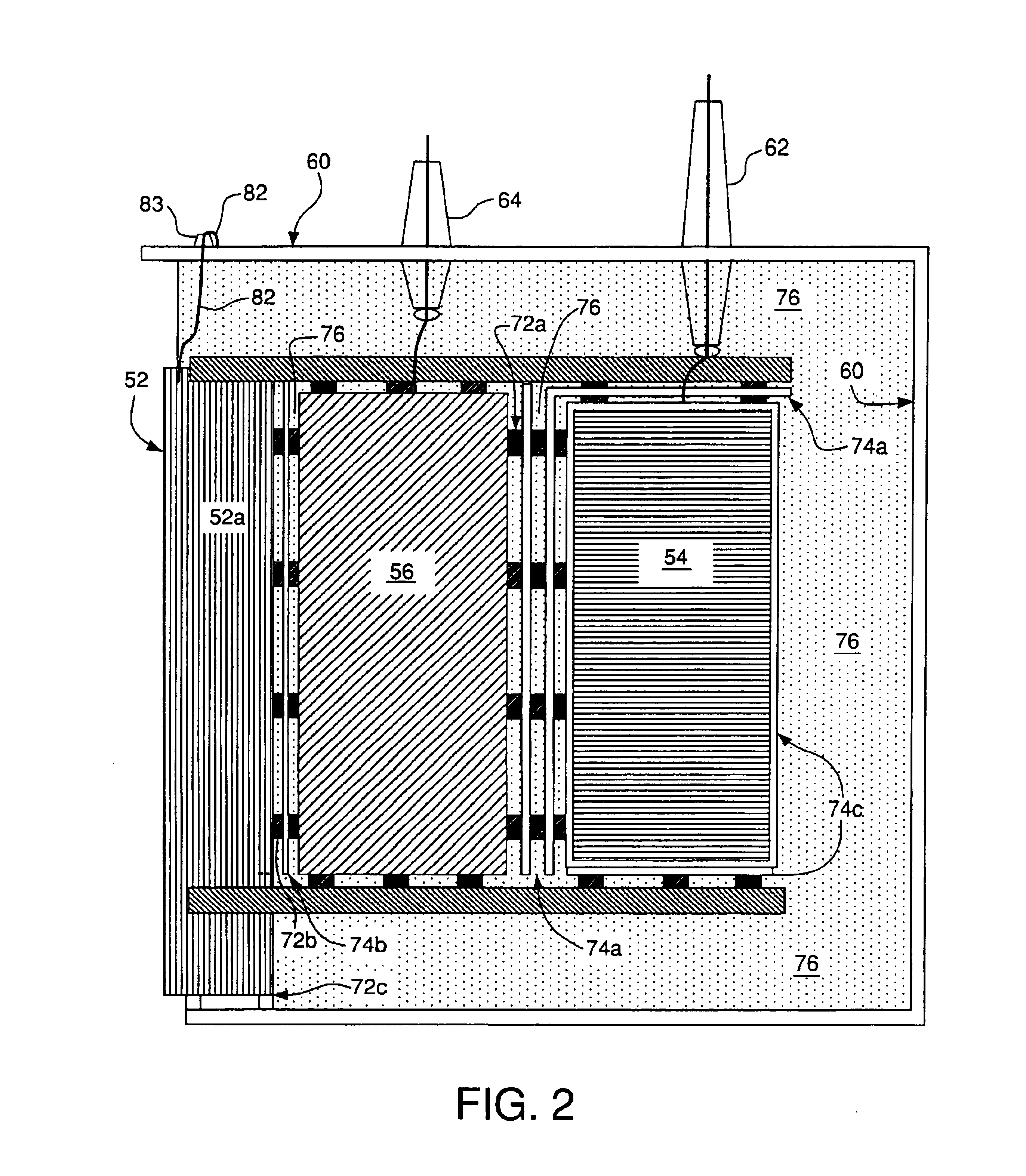Process for identifying abnormalities in power transformers
a technology for abnormalities and power transformers, applied in the field of power transformers, can solve problems such as potentially dangerous malfunctions, degrade the insulating properties of oil, paper, cellulose insulators,
- Summary
- Abstract
- Description
- Claims
- Application Information
AI Technical Summary
Benefits of technology
Problems solved by technology
Method used
Image
Examples
Embodiment Construction
A preferred process 10 for identifying an abnormality, e.g., a defect, in an insulation system of an electrical-power transformer is depicted in FIG. 1. The process 10 is described in connection with a conventional power transformer 50 depicted, in part, in FIG. 2. Specific details relating to the power transformer 50 are presented for exemplary purposes only, as the process 10 can be used in conjunction with virtually any type of power transformer.
The power transformer 50 comprises a core 52 having a leg 52a (the core 52 also comprises other legs not visible in FIG. 1). The transformer 50 further comprises a low-voltage winding 56 positioned around the leg 52a, and a high-voltage winding 54 positioned around the low-voltage winding 56. The core 52, high-voltage winding 54, and low-voltage winding 56 are housed in a casing 60. It should be noted that the transformer 50 is depicted diagrammatically in FIG. 1. Various components of the transformer 50 are not shown in FIG. 1, and the s...
PUM
 Login to View More
Login to View More Abstract
Description
Claims
Application Information
 Login to View More
Login to View More - R&D
- Intellectual Property
- Life Sciences
- Materials
- Tech Scout
- Unparalleled Data Quality
- Higher Quality Content
- 60% Fewer Hallucinations
Browse by: Latest US Patents, China's latest patents, Technical Efficacy Thesaurus, Application Domain, Technology Topic, Popular Technical Reports.
© 2025 PatSnap. All rights reserved.Legal|Privacy policy|Modern Slavery Act Transparency Statement|Sitemap|About US| Contact US: help@patsnap.com



